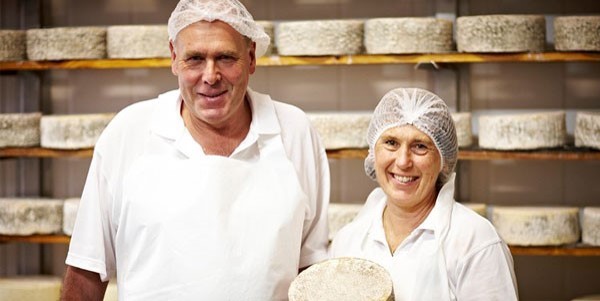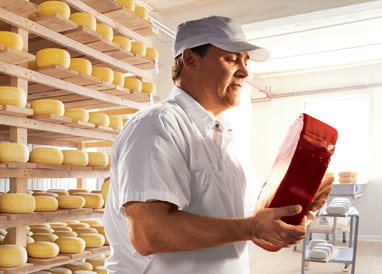From Thomastown to Your Table: The Excellence of Floridia Cheese Melbourne
From Thomastown to Your Table: The Excellence of Floridia Cheese Melbourne
Blog Article
Unlocking the Keys of Artisanal Cheese Making: A Detailed DIY Overview
In the world of cooking workmanship, artisanal cheese making stands as a testament to the delicate equilibrium in between tradition and technology. Each step in the procedure, from choosing the right milk to developing aging techniques, holds within it a wealth of expertise passed down via generations. As we get started on this journey to demystify the art of creating elegant cheeses, we are encountered with a tapestry of tricks and abilities waiting to be deciphered. Join us as we explore the intricacies of this ancient craft, where art, science, and perseverance merge to create flavors that tantalize the senses.
Selecting the Right Milk
When embarking on the trip of artisanal cheese production, the selection of milk plays a crucial function in figuring out the quality and attributes of the last item. The kind of milk picked influences the taste, texture, and on the whole profile of the cheese.
When selecting milk for cheese making, it is very important to take into consideration the fat material. Greater fat content in milk can result in a creamier and richer cheese, while lower fat content may bring about a drier and stronger structure. Furthermore, the resource of the milk, whether from cows, goats, lamb, or buffalo, adds distinct tastes and attributes to the cheese (Floridia Cheese). Each kind of milk brings its very own nuances, enabling a wide variety of cheese varieties to be crafted based upon the picked milk. Inevitably, the choice of milk is an essential decision that establishes the structure for an effective artisanal cheese-making venture.
Culturing and Coagulating
To launch the cheese-making process, the critical actions of culturing and coagulating have to be meticulously performed to transform milk right into curds and whey. The type of culture used can substantially impact the flavor, appearance, and ripening of the final cheese product.

The timing and temperature control during culturing and coagulation are crucial elements that influence the final outcome of celebrity. Correct implementation of these actions is vital to ensure the preferred appearance, taste, and consistency of the artisanal cheese being created.
Draining Pipes and Pressing Curds
After the milk healthy proteins have coagulated and the curds have actually been reduced to launch whey, the next vital action in artisanal cheese making involves draining and pressing the curds to accomplish the wanted appearance and uniformity of the final cheese product. The time for draining can vary depending on the kind of cheese being made and the preferred dampness content.
Pushing assists get rid of any type of continuing to be whey and compacts the curds to form a strong cheese wheel. Proper draining pipes and pressing are vital actions that substantially influence the top quality and qualities of the artisanal cheese being generated.
Aging and Flavor Strategies
Implementing meticulous aging and flavor techniques is crucial in improving the deepness and intricacy of artisanal cheeses, boosting their preference profiles to exquisite degrees of improvement and sophistication. Aging plays a crucial role in developing the unique tastes and structures that identify artisanal cheeses. During the aging procedure, cheeses are saved in meticulously regulated environments where aspects such as temperature level, humidity, and airflow are adjusted to encourage the growth of helpful mold and mildews and microorganisms. This controlled atmosphere enables the cheese to develop gradually, establishing rich tastes and intricate scents.
Seasoning methods Cheese Makers Melbourne also contribute dramatically to the last preference of artisanal cheeses. Cheesemakers may pick to present added flavors by incorporating active ingredients such as natural herbs, seasonings, and even fruits right into celebrity during the manufacturing procedure. Furthermore, some cheeses are washed or massaged with numerous liquids, such as brine or alcohol, to boost their tastes and structures.
Covering and Storing Cheeses

Verdict
In verdict, mastering the art of artisanal cheese making includes thoroughly selecting the appropriate milk, following exact culturing and coagulating procedures, draining and pushing curds efficiently, and utilizing various aging and flavor methods. By complying with these actions faithfully and with focus to detail, you can develop your own tasty and one-of-a-kind cheeses at home. Bear in mind to cover and store your cheeses effectively to make sure optimal taste and structure development. Happy cheese making!
Each kind of milk brings its own subtleties, enabling for a large array of cheese selections to be crafted based on the picked milk.After the milk healthy proteins have coagulated and the curds have actually been cut to release whey, the next critical action in artisanal cheese making entails draining pipes and pushing the curds to achieve the wanted appearance and uniformity of the last cheese item. The majority of cheeses should be wrapped in wax paper or cheese paper to enable them to take a breath while shielding them from drying out. For cheeses that need to proceed aging, such as bloomy skins or washed peels, guarantee they are saved in a cool environment like a cheese cavern or a refrigerator set to the proper temperature level. By paying focus to the covering and storage space of artisanal cheeses, cheese makers and enthusiasts can maintain the stability of these specials and totally appreciate their complex flavors.
Report this page